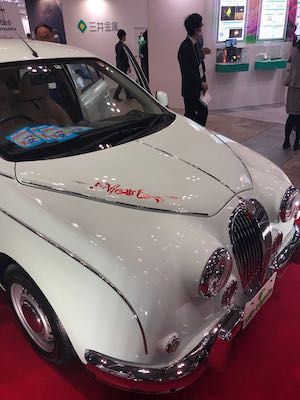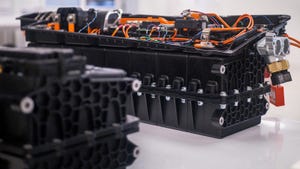The plant-based material has been utilized in a prototype engine hood as well as interior components.
February 4, 2019

A research consortium in Japan is developing thermoset composite materials incorporating lignin. Headed by the country’s Forestry and Forest Products Research Institute (FFPRI), the SIP-Lignin group (Research Consortium for Lignin-Based Materials on the Research Program of SIP) is also developing applications such as hybrid films, flexible electronic devices, gasket materials and carbon fiber that are based on lignin.
|
Prototype vehicle fitted with an engine hood made of fiber reinforced composite incorporating modified lignin. |
|
Lignin has also been employed in composites used in auto interior components. |
As part of these efforts, research consortium member Miyagi Kasei Co., a processor of thermoset composites using processes such as resin transfer molding (RTM) and infusion molding, has teamed up with boutique Japanese automaker Mitsuoka Motor and the National Institute of Advanced Industrial Science and Technology (AIST) to develop an engine hood and interior components such as door trim and speaker cases made from 40% glass fiber reinforced epoxy composite with a 17% lignin content. The lignin is incorporated in powder form, and contributes to part lightweighting of 4% as well as lower emissions of formaldehyde, acetaldehyde, and styrene during processing.
Shinichi Iwata, Senior Chief of the Plan Development Department at Miyagi Kasei says they have also experimented with carbon fiber reinforced composites where the addition of 17% lignin can reduce the number of carbon fiber plies necessary to attain the same mechanical strength. Iwata cites a test part where four plies were used instead for five to realize the same strength at a part mass that us 17.5% lighter.
About the Author(s)
You May Also Like






